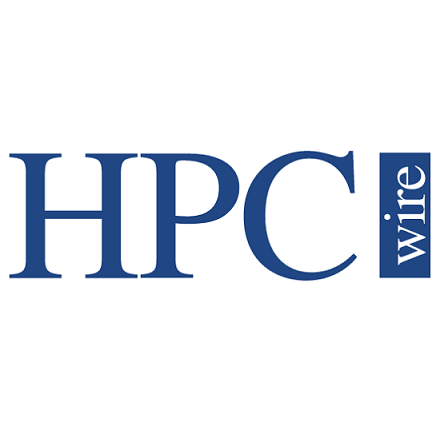
Mellanox and QLogic Play Duopoly
December 1, 2010
With the Voltaire acquisition in the works, Mellanox is set to deliver a serious blow to its only other InfiniBand competitor. Read more…

Mellanox to Buy Voltaire
November 29, 2010
Voltaire shareholders got an early Christmas present this week. Mellanox Technologies has entered a definite agreement to acquire Voltaire Ltd. for a cash value of $8.75 per share, equivalent to approximately $218 million. The deal would represent the first major consolidation of InfiniBand vendors. Read more…

The Week in Review – 10/28/2010
October 28, 2010
Chinese Tianhe-1A supercomputer exploits GPU power to deliver 2.5 petaflops; and Cray nabs a $60 million contract with the University of Stuttgart. We recap those stories and more in our weekly wrapup. Read more…

Arista Scales Up Ethernet Portfolio with Big Switch
April 20, 2010
The axis of datacenter networks is shifting and for companies like Arista Networks and other high performance 10 Gigabit Ethernet switch vendors, this is opportunity knocking. The North-South network traffic pattern of client-server computing that dominated the industry for so long is giving way to high performance East-West networks where server-to-server communication is paramount. Read more…

A Couple of New InfiniBand Songs
March 25, 2010
QLogic intros new pass-through module; Voltaire debuts MPI offload technology. Read more…

The Week in Review – 03/11/2010
March 11, 2010
The ACM Turing Award goes to the creator of the modern personal computer; and Voltaire announces a mid-range InfiniBand switch and new technology that accelerates distributed applications. We recap those stories and more in our weekly wrapup. Read more…

Voltaire Launches InfiniBand-Ethernet Bridge
January 26, 2010
Voltaire has announced the Grid Director 4036E, a new QDR InfiniBand switch that includes a built-in Ethernet gateway. As such, it acts as a network bridge that hooks together QDR InfiniBand and 10 GigE infrastructure, all implemented inside a 1U box. Read more…

Now is the Time for Voltaire to Acquire the InfiniBand Business of Qlogic
August 4, 2009
Should Voltaire buy QLogic's InfiniBand business to counter Mellanox? Read more…

- Click Here for More Headlines

Whitepaper
Transforming Industrial and Automotive Manufacturing
In this era, expansion in digital infrastructure capacity is inevitable. Parallel to this, climate change consciousness is also rising, making sustainability a mandatory part of the organization’s functioning. As computing workloads such as AI and HPC continue to surge, so does the energy consumption, posing environmental woes. IT departments within organizations have a crucial role in combating this challenge. They can significantly drive sustainable practices by influencing newer technologies and process adoption that aid in mitigating the effects of climate change.
While buying more sustainable IT solutions is an option, partnering with IT solutions providers, such and Lenovo and Intel, who are committed to sustainability and aiding customers in executing sustainability strategies is likely to be more impactful.
Learn how Lenovo and Intel, through their partnership, are strongly positioned to address this need with their innovations driving energy efficiency and environmental stewardship.
Download Now
Sponsored by Lenovo
Whitepaper
How Direct Liquid Cooling Improves Data Center Energy Efficiency
Data centers are experiencing increasing power consumption, space constraints and cooling demands due to the unprecedented computing power required by today’s chips and servers. HVAC cooling systems consume approximately 40% of a data center’s electricity. These systems traditionally use air conditioning, air handling and fans to cool the data center facility and IT equipment, ultimately resulting in high energy consumption and high carbon emissions. Data centers are moving to direct liquid cooled (DLC) systems to improve cooling efficiency thus lowering their PUE, operating expenses (OPEX) and carbon footprint.
This paper describes how CoolIT Systems (CoolIT) meets the need for improved energy efficiency in data centers and includes case studies that show how CoolIT’s DLC solutions improve energy efficiency, increase rack density, lower OPEX, and enable sustainability programs. CoolIT is the global market and innovation leader in scalable DLC solutions for the world’s most demanding computing environments. CoolIT’s end-to-end solutions meet the rising demand in cooling and the rising demand for energy efficiency.
Download Now
Sponsored by CoolIT
Advanced Scale Career Development & Workforce Enhancement Center
Featured Advanced Scale Jobs:
HPCwire Resource Library
HPCwire Product Showcase
© 2024 HPCwire. All Rights Reserved. A Tabor Communications Publication
HPCwire is a registered trademark of Tabor Communications, Inc. Use of this site is governed by our Terms of Use and Privacy Policy.
Reproduction in whole or in part in any form or medium without express written permission of Tabor Communications, Inc. is prohibited.
























